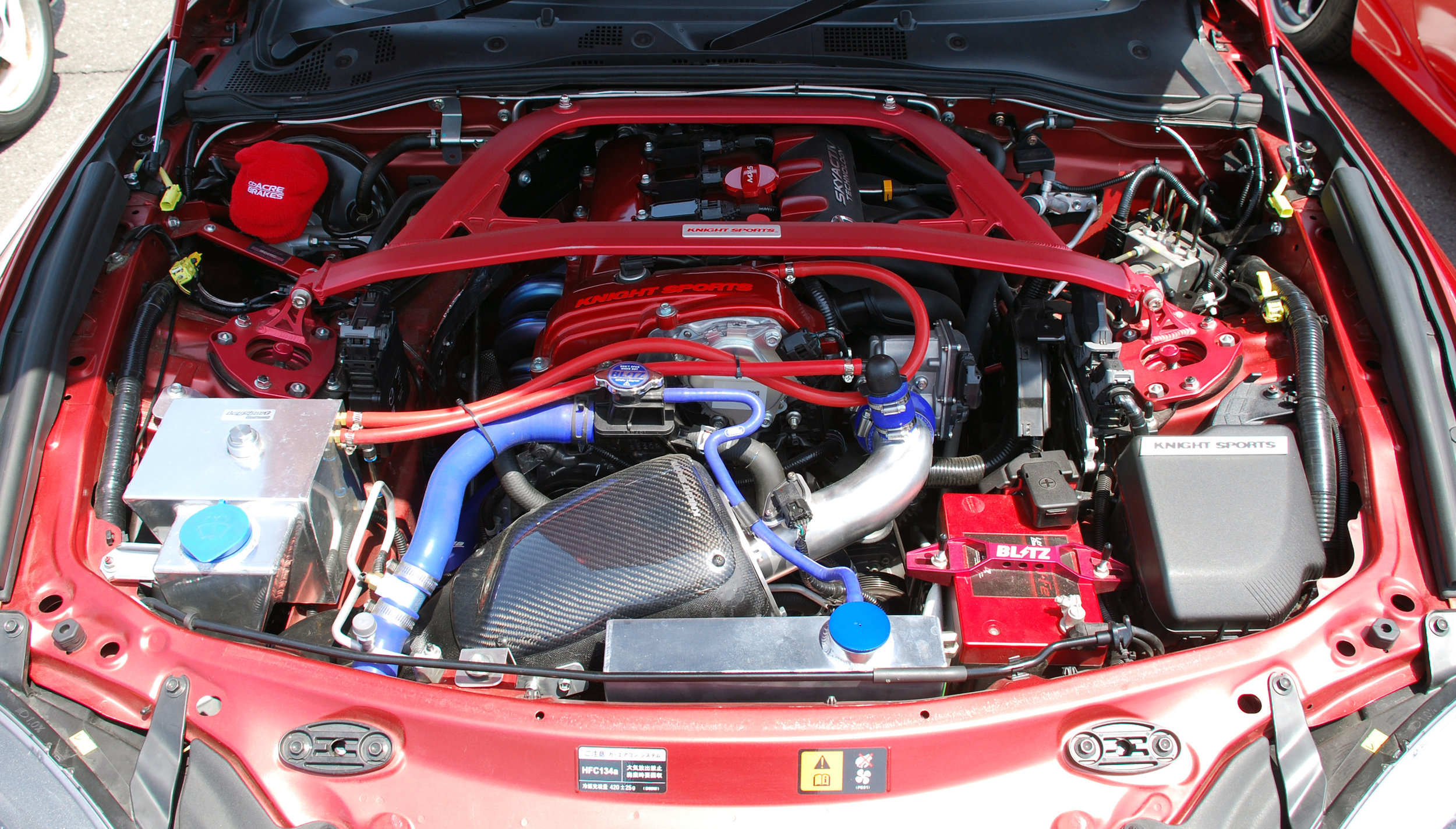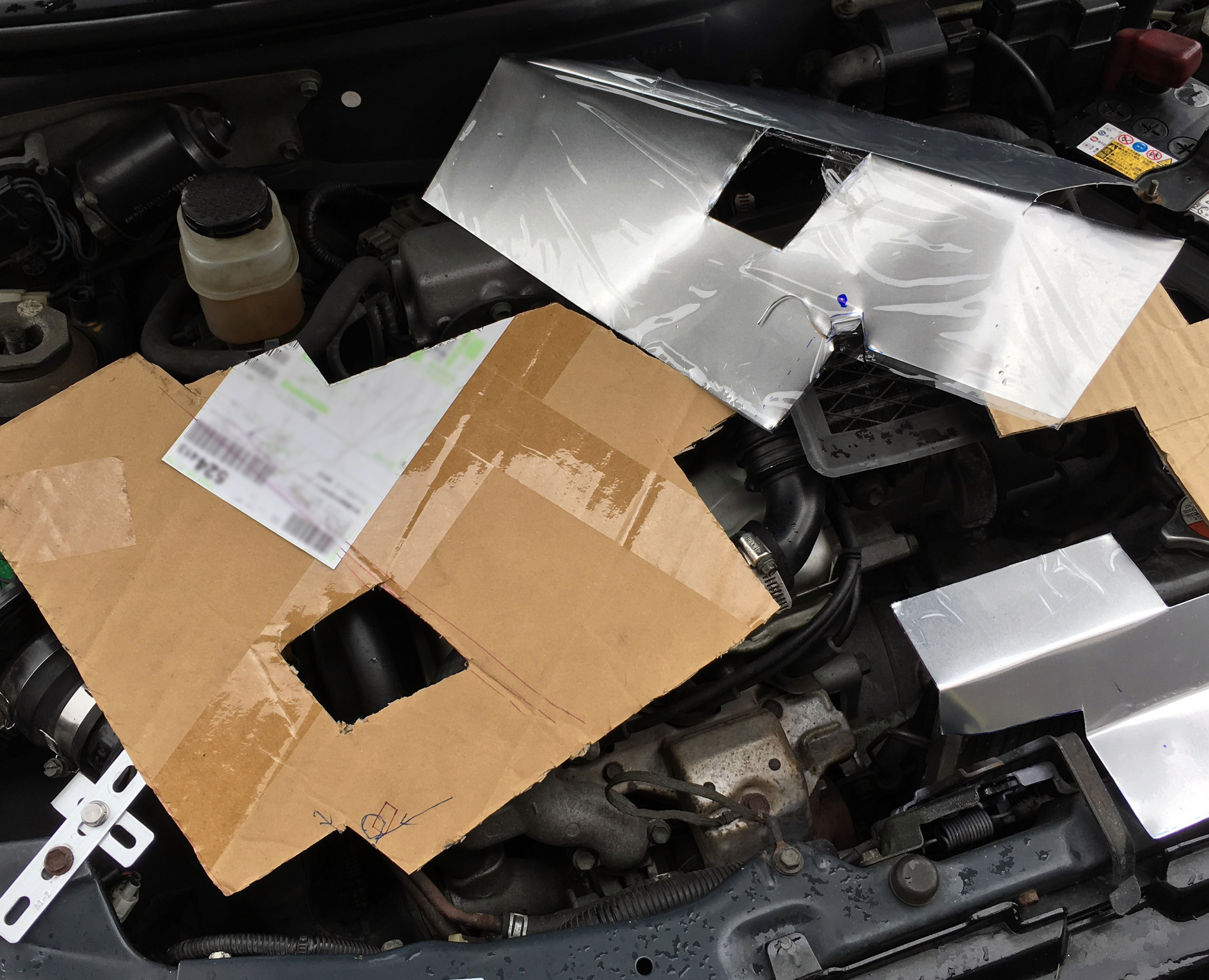[ Alto Works ] Heat Shield and Radiator Panel
Perhaps, to everyone but car tuners, this is not the most glamorous or exciting post. If you’re looking for exotic and exciting car pictures, you won’t find much here. However, this post is for those interested in reading about small, but pragmatic improvements!
Heat is an enemy of performance cars, especially to turbocharged engines. Hot air reduces air density and increases temperatures throughout the system, potentially greatly affecting performance. Therefore, drawing ambient air is always better than drawing hot air near the turbo or exhaust manifold. Rejecting heat from engine components is also crucial.
Especially since I replaced the stock airbox with an HKS Super Power Flow, I’ve been additionally concerned with heat. My previous aluminum .3mm heat shield was thin and too small to block off significant heat and draw in fresh air. The use of aluminum is on the right path, as it is an excellent conductor of heat, on top of being cheap, relatively malleable, and rust-resistant. I set about making a better “airbox” that can be directed to draw air from the front, especially away from the hot air near the exhaust manifold, and reject some of that heat.
This is the design I came up with. I used a 300x400mm .5mm width sheet of aluminum that was thick enough to be durable, thin enough to cut fairly easily, bendable without breaking, and relatively inexpensive at about 700¥ ($6.50 USD). Most of the portion from the front frame support to the strut tower is covered by the single sheet, encouraging airflow from the front and blocking off most of the hot air from the engine. A large upper hole had to be made to allow the recirculating pipe back to the intake and the rest was well supported by various mounting holes. I think this succeeded in all points and with no drawbacks, though it certainly isn’t very pretty.
For the next part of improving underhood efficiency, I looked toward making a radiator panel for the Alto. A radiator panel essentially is designed to force air pressure from the front through the radiator instead of through the past of least resistance, around it. Many cars now come stock with such a panel for this explicit purpose, but this car did not, probably due to cost-cutting measures. There is at least one aftermarket manufacturer that once produced an HA11S Alto-specific part, but it is impossible to find now.
No matter, it’s something I can try to fabricate myself. It wasn’t too hard to make something that could fit in the rather flat area with clearance for the radiator cap and hose. When I was cutting the cardboard template, I noticed that the right side of the radiator was especially exposed, also allowing air to potentially escape around it. I wanted to design an angled plate that would prevent that.
I used the same size sheet of aluminum I used for the intake shield. Surprisingly, this also took most of the sheet due to the radiator’s length. Two of the front radiator support screws hold the shield in place.
The side panel was cut from a long sheet and supported at the top by an L-shaped steel bracket. The bottom of the sheet was supported by a bolt that applied pressure against the frame and sheet. Overall, I think both pieces came out really well for an afternoon’s worth of work and absolutely critical when I start putting the car through some serious paces.
Unfortunately, I do not have gauges to measure water or intake temperatures, so I’m not empirically sure the efficiency is dramatically improved in reality. But theoretically, these panels should work to improve cooling. They are certainly not beautiful, but they are functional. And that’s what’s really important for a project car, right?









